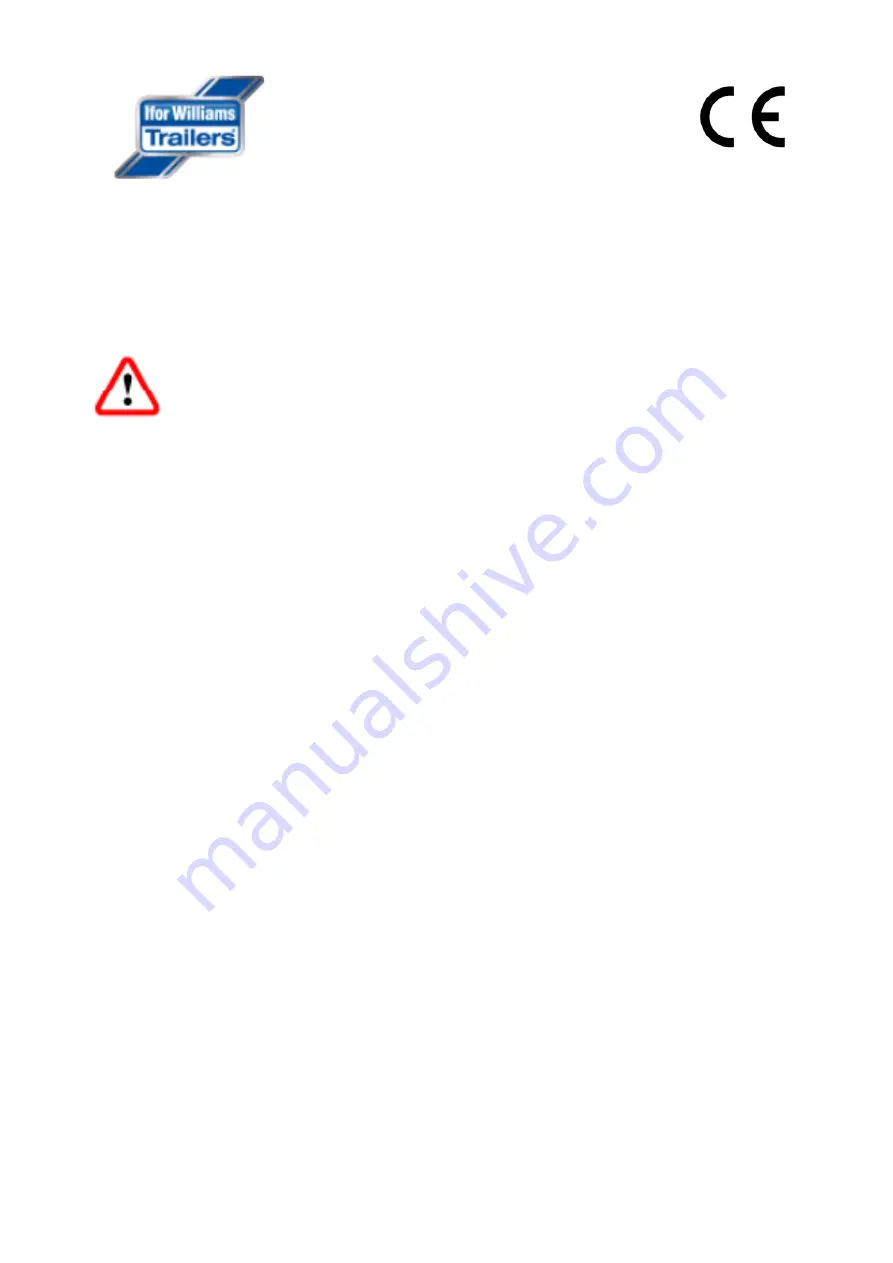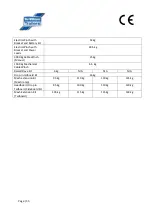
Page | 49
5.10
–
Suspension
5.10.1
–
Suspension Inspection
•
The great majority of springs last the life of the trailer and no maintenance of the
spring itself is required. In particular DO NOT GREASE OR OIL THE SLIPPER SURFACE AT
THE REAR OF THE SPRING
–
it increases the spring stress and greatly increases the risk of
premature failure.
•
The spring eye bushes should be inspected using the following procedure:
•
Jack the chassis up so that the rear of each spring in turn falls away from the slipper surface
but not so far as to cause the corresponding wheel to leave the ground. Make sure the trailer
is safely supported and reach underneath to feel for looseness at the front of the spring. If
there is noticable movement or rattle then the spring eye bush (IW part P1208) needs
replacing. This requires the spring to be removed from the axle and the trailer.
•
Spring eye bolt and U-bolt torques should be checked. Correct torques are:
•
Spring eye bolts: 105 Nm (77 lbf.ft)
•
U-bolts: 140 Nm (103 lbf.ft)
•
Note: spring shackle bolts (always at the rear of springs but not the rear of every spring)
where only a nylon roller is retained (no spring eye) must not be tightened beyond 40 Nm and
do not require checking.
•
Every spring has a bump stop above it which is secured by the U-bolts. It is important to check
that the bump stop is intact. The bump stop comprises a rubber element bonded to a metal
plate. Failure may take the form of the bond failing and the whole rubber bump stop falling
off, leaving just the metal plate. Occasionally overloaded bump stops just split. Bump stops
which have lost their rubber or are split must be replaced immediately.
5.12 Washing
•
Regular washing with a solution of water and mild detergent such as car wash will help to
prolong the surface finish of plated and painted components.
•
This is particularly important if the trailer is used on salt-treated roads, in coastal areas, is
heavily soiled or is used to carry corrosive substances such as fertilizers. In these cases, the
trailer should be thoroughly washed down after each use.
•
If using a pressure washer, care should be taken to avoid training the high pressure spray onto
electrical components or decals for extended periods or at close range.
•
Additives intended for brightening aluminium, often containing phosphoric acid, must not be
used on galvanised surfaces as they will slowly remove the zinc.







































